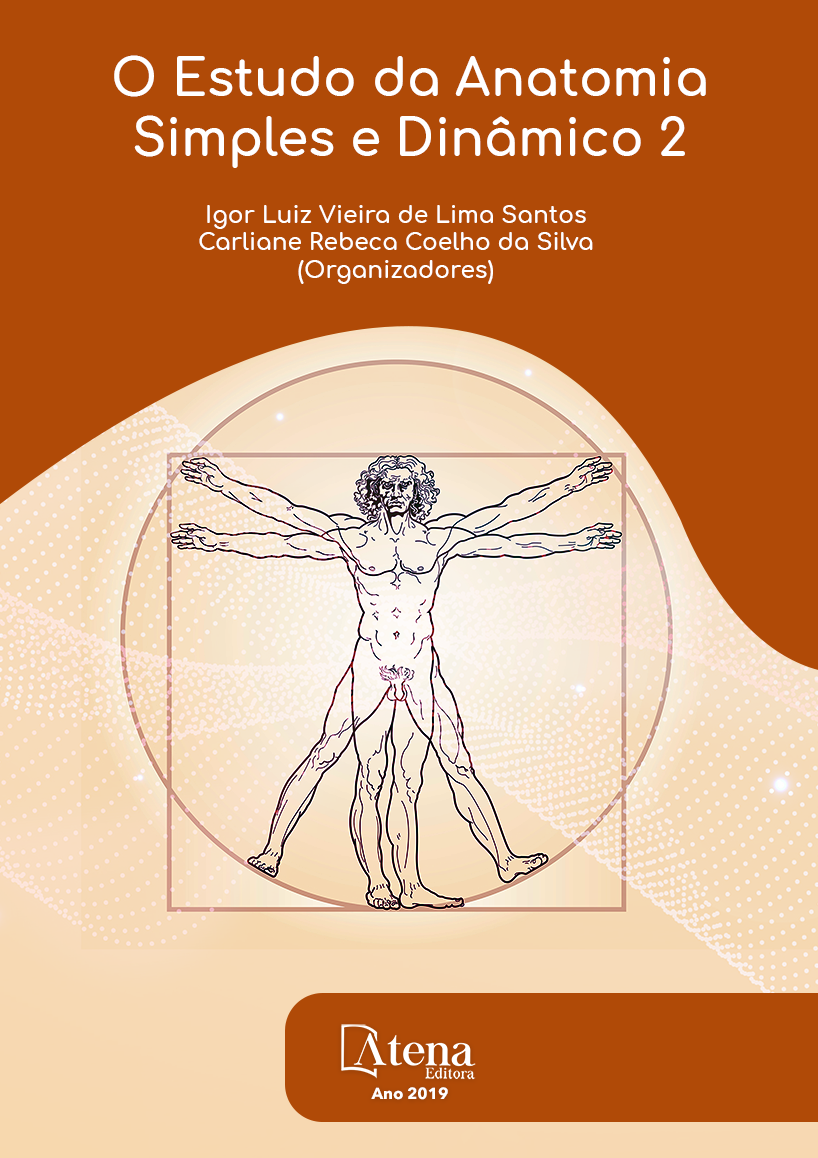
ANÁLISE MORFOMÉTRICA DIMÓRFICA ENTRE FORAMES JUGULARES EM CRÂNIOS SECOS DA PARAÍBA
Introdução: O forame jugular está
localizado entre o osso temporal e o occipital e
permite a passagem de estruturas importantes
como o nervo glossofaríngeo, vago, acessório,
ramos meníngeos das artérias faríngea
ascendente e occipital e a veia jugular interna,
principal veia de drenagem do cérebro. O
conhecimento detalhado acerca dos aspectos
morfométricos desse forame possui grande
relevância para os cirurgiões que atuam nesta
área visando à redução de lesões iatrogênicas.
Objetivo: Analisar a morfometria dimórfica
entre forames jugulares em crânios secos da
Paraíba. Metodologia: Foram analisados 50
crânios secos de instituições públicas de ensino
superior da Paraíba. Para mensuração dos
diâmetros antero posterior (AP) e latero lateral
(LL) do forame jugular foi utilizado um paquímetro
digital Nove54. A análise foi realizada através
do software Prism v 5.0. Resultados: Dos 50
crânios analisados, 35 eram masculinos e 15
eram femininos. Houve diferenças significativas
entre a média das distâncias AP dos forames
jugulares masculinos, sendo maior o lado
direito (7,56 ± 1,54 mm) quando comparado ao
lado esquerdo (6,08 ± 0,21 mm). A média LL direita feminina foi menor (10,94 ± 0,36
mm) que o LL direito masculino (12,62 ± 0,27 mm). Conclusão: Foram encontradas
diferenças morfométricas significativas relacionadas ao dimorfismo do forame jugular.
Os crânios masculinos apresentaram diâmetro AP e LL maiores no lado direito,
enquanto que nos crânios femininos o diâmetro AP foi maior do lado esquerdo, sem
diferenças significativas relacionadas ao diâmetro LL. O conhecimento morfométrico
desse forame deve ser levado em consideração durante as abordagens cirúrgicas
nesta área.
ANÁLISE MORFOMÉTRICA DIMÓRFICA ENTRE FORAMES JUGULARES EM CRÂNIOS SECOS DA PARAÍBA
-
DOI: 10.22533/at.ed.3311925094
-
Palavras-chave: Forame jugular. Morfometria. Anatomia. Dimorfismo
-
Keywords: Jugular foramen. Morphometry. Anatomy. Dimorphism
-
Abstract:
Introduction: The jugular foramen is located between the temporal
and occipital bones and allows the passage of important structures such as the
glossopharyngeal, vagus, accessory nerve, meningeal branches of the ascending and
occipital pharyngeal arteries and the internal jugular vein, the main drainage vein of
the brain. The detailed knowledge about the morphometric aspects of this foramen
has great relevance for the surgeons who work in this area aiming the reduction
of iatrogenic lesions. Objective: To analyze the dimorphic morphometry between
jugular foramina in dry skulls of Paraíba. Methodology: Fifty dry skulls from public
institutions of higher education in Paraíba were analyzed. To measure the anterior (AP)
and lateral lateral (LL) diameters of the jugular foramen, a Nove54 digital caliper was
used. The analysis was performed using Prism v 5.0 software. Results: From the 50
skulls analyzed, 35 were male and 15 were female. There were significant differences
between the mean AP distances of the male jugular foramina, with the right side being
greater (7.56 ± 1.54 mm) when compared to the left side (6.08 ± 0.21 mm). The mean
female right LL was lower (10.94 ± 0.36 mm) than the right male LL (12.62 ± 0.27 mm).
Conclusion: Significant morphometric differences were found related to the jugular
foramen dimorphism. The male skulls presented larger AP and LL diameter on the
right side, whereas in female skulls the AP diameter was larger on the left side, with no
significant differences related to the LL diameter. The morphometric knowledge of this
foramen should be taken into consideration during the surgical approaches in this area.
-
Número de páginas: 15
- Jomara dos Santos Evangelista
- Camila Freitas Costa
- Ana Beatriz Marques Barbosa
- Maria Joseane Arruda de Lima
- Daniely Lima Gomes
- Raniele Cândido de Couto
- Thiago de Oliveira Assis
- Carla Ellen Santos Cunha


